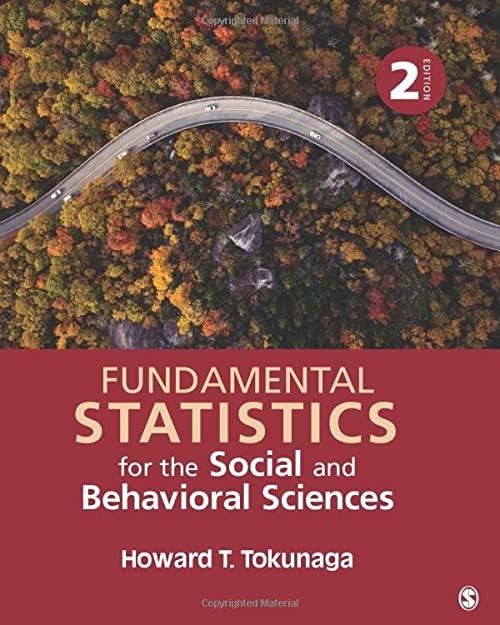The researcher in Exercise 12 notices the large amount of variability within each of the two groups.
Question:
The researcher in Exercise 12 notices the large amount of variability within each of the two groups. Investigating, he finds the research assistants counting the number of correctly remembered sentences differed in what they counted as a correct sentence. Some experimenters counted them as correct if the participant remembered the general idea of the sentence, whereas others only counted it as correct if every single word was recalled in the correct order. To decrease this source of error, he handed out instructions on what should be counted as "correct." Using the following new data and the steps of hypothesis testing, determine if there is a significant difference between the groups.
Placebo: \(7,4,5,6,5,7,6\)
Experimental: \(9,6,7,8,5,8,9\)
a. For each group, calculate the sample size \(\left(N_{i}\right)\), mean \(\left(\bar{X}_{i}\right)\), and standard deviation \(\left(s_{i}\right)\).
b. State the null and alternative hypothesis \(\left(\mathrm{H}_{0}\right.\) and \(\left.\mathrm{H}_{1}\right)\).
c. Make a decision about the null hypothesis.
(1) Calculate the degrees of freedom ( \(d f\) ).
(2) Set alpha \((\alpha)\), identify the critical values, and state a decision rule.
(3) Calculate a statistic: the \(t\)-test for independent means.
(4) Make a decision whether to reject the null hypothesis.
(5) Determine the level of significance.
d. Draw a conclusion from the analysis.
e. What type of error (Type I or Type II) was committed the first time the study was conducted?
Step by Step Answer:

Fundamental Statistics For The Social And Behavioral Sciences
ISBN: 9781506377476
2nd Edition
Authors: Howard T Tokunaga




